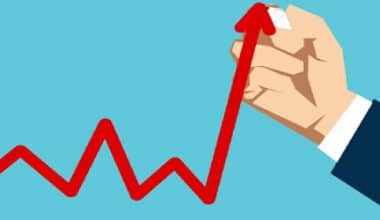Opportunity cost is the cost of comparing one economic choice to the next best choice. It is a concept used in finance and economics to measure the impact of selecting one investment over another. Opportunity cost analysis is a crucial tool for decision-making. It helps with budgeting, evaluating multiple offers, and determining the best business path for individuals. In other words, understanding how to calculate opportunity cost can help you when faced with multiple viable options.
This article provides a method for calculating opportunity cost and offers valuable insights to help in investment decisions.
Firstly, let’s understand the concept of “opportunity cost.”
Understanding Opportunity Cost
Investors are constantly presented with various options to choose from in order to achieve the highest or safest ROI. Opportunity costs influence consumer and business decisions. This includes production, time management, and capital allocation
Definition: Opportunity cost refers to the potential loss that may occur when an individual chooses one option over another. It can be viewed as a trade-off, where one option is sacrificed for another in any decision. Opportunity cost assigns a specific figure to the trade-off between investing in government bonds over high-risk stocks.
Now let’s examine the types of opportunity cost that we have.
Read Also: TYPES OF BUSINESS OPPORTUNITY: Opportunities to Try in 2023
Types of Opportunity Cost.
Determining opportunity costs helps businesses choose the most productive option and understand potential risks and benefits before making a decision. Basically, there are two types of opportunity costs: Implicit and Explicit Opportunity Cost.
- Implicit Opportunity Cost: This opportunity cost is an intangible expense that is difficult for individuals to easily quantify. Implicit opportunity costs do not account for the direct monetary costs lost during decision-making processes.
- Explicit Opportunity Cost: Explicit Opportunity Costs refer to the direct monetary losses incurred when making a decision. Explicit costs are typically recorded as dollar amounts or tangible costs.
Opportunity cost is categorized based on its relevance in decision-making. This refers to the benefits lost by making one choice over another, while irrelevant costs do not impact the decision. Understanding opportunity costs helps minimize losses and maximize gains in various situations by considering explicit and implicit costs and relevant factors.
How to Calculate Opportunity Cost
The calculation of opportunity cost is crucial for making informed decisions. It involves considering the benefits and costs of each alternative option.
Firstly, identify potential options, assess their benefits and costs, and then compare them to calculate their respective opportunity costs. To calculate the value of one option over another, subtract its benefit and divide it by the cost difference, resulting in a ratio.
Note, that it’s crucial to consider both financial and non-financial factors, such as time and effort when making decisions.
Formula for Calculating Opportunity Cost:
There is no universally accepted mathematical formula for calculating opportunity cost. However, various mathematical approaches can be employed to conceptualize it.
According to the definition: Opportunity cost is the value of the next best alternative. This alternative can be measured in various ways such as money, time, or satisfaction.
Opportunity costs can be calculated using the ratio of sacrificing to gaining. The formula for opportunity costs can be easily understood when considering such a scenario:
That is, opportunity costs = What you sacrifice / What you gain
Businesses often refer to economic costs as opportunity costs when analyzing their operations. Opportunity costs are inherent in the production process for businesses. In business, opportunity costs can arise from not selecting opportunities, such as producing alternative goods and services.
Businesses often view opportunity costs as:
opportunity costs Total revenue – Economic profit
Understanding economic profit is crucial for businesses to comprehend opportunity costs. It represents the profit generated after deducting both explicit and implicit costs. Explicit costs are out-of-pocket expenses for running a business, while implicit costs refer to potential value generated if resources were used for other purposes.
The concept can be quite intricate, but the general concept suggests that a business must generate revenue exceeding its opportunity costs to gain benefits for its owners.
A company’s failure may be due to its inability to generate economic profit. The business owners will eventually have to leave the industry, and the business’s resources will be used for another purpose.
The Importance of Opportunity Cost
Opportunity cost is a crucial concept in decision-making. It refers to the value of the next-best alternative sacrificed when choosing one over another.
Opportunity cost aids decision-making by considering all available options, and determining if the chosen option’s benefits outweigh its costs or if there are better alternatives. For example, opportunity cost in procurement helps companies evaluate supplier offers more effectively by considering factors like price, product quality, and shipping time.
Additionally, it promotes efficient resource allocation by requiring careful consideration of trade-offs between options, ensuring efficient use of resources without wasting valuable time or money.
Economists can utilize opportunity costs to comprehend human market behavior. For instance, high tuition costs are a significant reason why people avoid college, and policy can be adapted to reduce these costs, impacting not only individual decisions but also the economy.
Opportunity Cost Examples
Opportunity cost is a concept that can be observed in various aspects of life. A common example is the decision to allocate money towards one item over another. Using savings to buy a car can result in an opportunity cost, as you lose the chance to invest in other assets like stocks or real estate. Many cautious consumers check their savings balance before making purchases but often overlook the sacrifices they must make.
Another example is a business’s decision to produce goods domestically or outsource production overseas may result in lost revenue due to high costs compared to cheaper labor costs abroad.
Opportunity cost also applies to personal relationships, as attending events with friends may deprive you of the chance to spend time with family members who may have similar plans.
How Opportunity Cost Works
Investors use opportunity cost calculation with hindsight for more accurate decisions, as real numbers make it easier to compare the return of an investment to the forgone alternative. Take for instance your aunt’s decision to buy ABC stock, which yielded 3% a year later, compared to XYZ’s 8% return, resulting in an opportunity cost of 5% (i.e. 8%-3%).
Opportunity cost is a widely used tool for investors to compare investments across various scenarios. For example, your friend’s decision to quit work for a year to attend school will result in a year’s worth of lost wages, which they will compare with the benefits of higher education.
You chose to read this article instead of reading another one, checking your Facebook page, or watching television. The choice made led to a trade-off, as your life is a result of past decisions, which is the essence of opportunity cost.
Limitations of Opportunity Cost
The primary limitation of opportunity cost is the challenge to accurately estimate future returns. Historical data can offer valuable insights into an investment’s performance, but achieving 100% accuracy is not always possible.
- Opportunity cost is crucial in decision-making. However, accurate analysis requires making the choice and comparing the performance of two investments.
- Quantification becomes challenging when considering factors that cannot be assigned a dollar amount. For instance, you have two investment options with conservative returns and slightly higher risk, with one requiring two years of cash tie-up and the other 10 years of no touch. The opportunity cost in this case will include the differences in liquidity.
Liquidity is the biggest opportunity cost, as it increases the risk of missing out on prime investment opportunities due to the inability to access tied-up funds. That’s the real opportunity cost, but it’s difficult to quantify in dollars, making it unfit for the opportunity cost equation.
wrapping up, opportunity cost is a crucial concept in decision-making, that helps in evaluating the potential returns of various options based on their benefits and drawbacks. Opportunity costs are present in procurement decisions, requiring careful consideration of both gains and losses to maximize organizational value.
Having an understanding of opportunity cost, especially how to calculate opportunity cost, is crucial for procurement professionals in today’s competitive business environment.
That is what this article was about
What Is Opportunity Cost in Total Cost?
Opportunity cost is the cost you lose by choosing one investment option over another. It is calculated using the formula: Return on Most Profitable Investment Choice – Return on Investment Chosen to Pursue.
What is the law of opportunity cost?
The law of increasing opportunity cost states that opportunity costs increase as resources are allocated to producing each alternative unit, particularly when businesses have limited resources.
The production possibility curve represents the trade-off between two goods, with the slope representing the opportunity cost of producing one good in relation to the other.
What are the factors affecting opportunity cost?
The three key factors influencing opportunity costs in production: are land, labor, and capital.
Can opportunity cost be negative?
Opportunity cost can be positive or negative. The negative indicates potential loss while the positive indicates a profitable move.
Building a Data-Driven Culture: Education and Training within Organizations
Economic Profit: Formula, Calculator and How to Calculate It.






